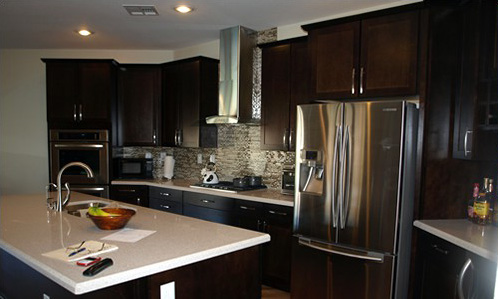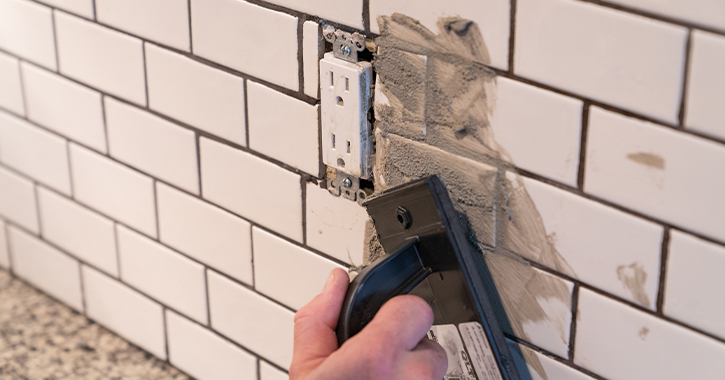
If you're a do it yourself enthusiast, you know how difficult it can be to clean up any dust left from your projects. Engineers have been looking for ways to eliminate this problem for many years. ZipWall, which zips up tight around any space, is the result. While it is quite expensive, it is a great solution for many DIY enthusiasts. Listed below are some helpful tips for constructing your own DIY dust barrier.
Seal registers and air vents with cardboard. These areas can be a breeding ground for dust and can damage your air filters. This can be prevented by covering the areas with plastic or tape. Be sure to cover the areas that are most likely to collect dust or make the most mess in your home. The entire room can also be covered with thick plastic to make a temporary barrier. This will shield the area from any dust that might be blow around during the project.

For those who are more experienced, there are kits available that are already assembled and ready to use. These kits look very similar to ZipWall's, but offer more options for DIY dust barriers. You can buy a kit that includes four adjustable poles and two red "Zip N' Close" zippers. Also included is a plastic sheeting and a carrying case. They are all easy to put together and very affordable.
A sticker material can be used to attach to the outside to make a DIY dust barrier. These mats will prevent dirt from traveling out. They can catch any dirt and grit that may have been tracked in. When your project is complete, take off the sticky sheets and replace them with a new sheet. A sticker mat lasts for around a year. The 30 sheets of adhesive material are very durable. You can use the stickers to add your company logo to your DIY dust barriers, making your project stand out.
A DIY dust barrier is a great way to keep dust at bay when you are remodeling. A zipper can be used to cut plastic sheeting up to 10 feet wide. If you are using large rolls of plastic, be sure to cut it in half. You can then run it horizontally along the ceiling or floor. If your plastic is thicker than the rest, you can attach it horizontally to fit around a window.

Your DIY dust barrier must be strong enough to withstand heavy dust. It should be able hold the amount dust you want. A DIY dust barrier must be strong enough to withstand heavy objects. The DIY version should also be able to withstand small amounts of dust. It is important to follow the DIY process with care. The more solid the barrier, then the easier it is to do the job. This includes a door kit which attaches the frame.
FAQ
Is there anything I could do to save on my home renovations?
By doing all the work yourself, you can save money. Reduce the number and frequency of people you hire for the renovation. You could also try to find ways to reduce the cost of materials used in the renovation process.
How do I sell my house quickly without paying realtor fees?
If you want to sell your house quickly, then you should start looking for buyers immediately. This means that you should accept any offer from the buyer. Waiting too long can lead to losing out on buyers.
How do I choose a good contractor?
Ask friends and family for recommendations when selecting a contractor. Online reviews are also a good option. Make sure that the contractor you choose has experience in the area of construction that you are interested in. Check out references and ask for them to provide you with some.
Can I renovate my whole house myself?
Why pay someone to do it for you when you can do it yourself?
It doesn't really matter how much you love DIY. There will always be times when you just can't do it. There may be too many variables involved for you to control.
A qualified electrician would be required to check the safety and reliability of your electrical system if you live in an older house.
Also, you should consider that some structural damage may not be possible during renovations.
In addition, you might not have the tools necessary to complete the job properly. You will need a special tool called the plumber's snake to clean clogged pipes if you plan to install a kitchen sink.
You must also follow plumbing codes to ensure that a licensed plumber is working on your project.
Let's just say that you must know what you can do before you undertake such a daunting task.
If you aren't sure if you have the skills or knowledge to tackle the task, get help from your family and friends.
They can help you determine the right steps and where you can find out more.
How many times should I change my furnace's filter?
This depends on how often your family will use their home heating system. You may need to change your filter more frequently if the temperature drops and you plan on being away from home during colder months. However, if you rarely go out of the house, you may be able to wait longer between changes.
The average furnace filter will last approximately three months. You should replace your furnace filters every three months.
The manufacturer will also give you recommendations on when to change your filter. Manufacturers recommend changing your filter after each heating season. Other manufacturers suggest waiting until visible dirt builds up.
How much does it set you back to renovate your house?
Renovations can cost from $5,000 to $50,000. Renovations typically cost homeowners between $10,000 and $20,000
Statistics
- ‘The potential added value of a loft conversion, which could create an extra bedroom and ensuite, could be as much as 20 per cent and 15 per cent for a garage conversion.' (realhomes.com)
- A final payment of, say, 5% to 10% will be due when the space is livable and usable (your contract probably will say "substantial completion"). (kiplinger.com)
- The average fixed rate for a home-equity loan was recently 5.27%, and the average variable rate for a HELOC was 5.49%, according to Bankrate.com. (kiplinger.com)
- On jumbo loans of more than $636,150, you'll be able to borrow up to 80% of the home's completed value. (kiplinger.com)
- Rather, allot 10% to 15% for a contingency fund to pay for unexpected construction issues. (kiplinger.com)
External Links
How To
How to Renovate an Old House?
To begin with, I would suggest that you should first determine what type of renovation project you want to undertake. This could be anything from updating your kitchen appliances to completely renovating the house.
Once you've decided what sort of renovation you want to carry out, then you need to think about how much money you have available to spend. It is possible that you don’t have the funds necessary to pay for the entire cost of the project. This could mean that you have to make tough decisions about which parts of your house you can afford and which you cannot.
Before you start work on your renovations, there are a few things you should consider. It is important to get all permits necessary for your job. It's also worth checking whether you need planning permission to carry out certain types of work. For example, if you plan to add extensions to your home, you might need to apply for building consent.
Before you start work on the house it is best to check with the local council website to determine if additional permits are required. It is also important to check whether planning permission is required for every part of the house you are renovating. To make sure you have enough coverage, contact your insurance provider if you intend to perform any major works, such as installing new roofs.
The next step after getting all the permits you need is to choose the right tools and materials for the job. There are many choices available so make sure to do your research thoroughly. Some of the most common items that people use during their renovation projects include paint, wallpaper paste, flooring, tiles, carpets, insulation, fencing, doors, windows, lighting, plumbing, heating systems, electrical wiring, plasterboard, timber, concrete, bricks, tiling, mirrors, sinks, taps, toilets, washing machines, ovens, refrigerators, microwaves, dishwashers, vacuum cleaners, carpet cleaning equipment, air conditioning units, fireplaces, chimneys, and even garden furniture!
You should consider the product's overall quality when shopping for these items. Quality products last longer than cheaper products and are less expensive. It is important to buy the right amount of anything when buying. Don't purchase too much as it can lead to waste of resources and the need for a lot of material. Try to only buy what you actually need.
After choosing the right materials for the job you should decide where to keep them while you're renovating the property. If you're planning on renovating a large space of your house, you might need storage space. You can also ask family and friends to help move your items.